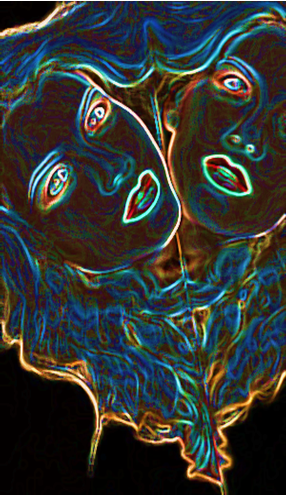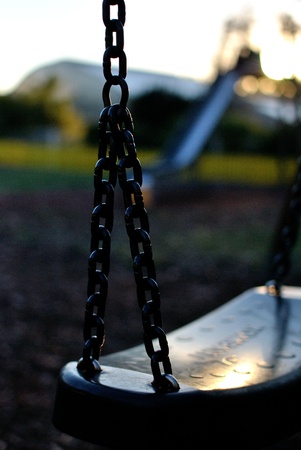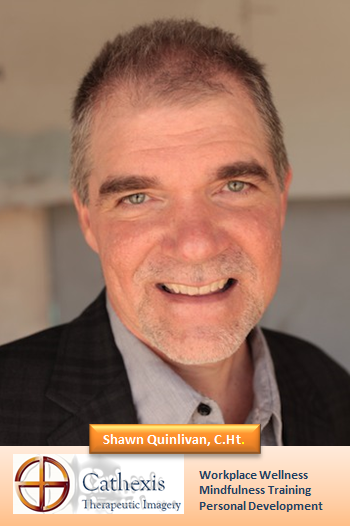Positive body image is more than merely how we see ourselves physically. It’s how we feel about our physical appearance. And more specifically, the ways in which liking our appearance differs from disliking our appearance, and how this translates to our relationship with ourselves and the world.
Genetic inheritance influences our bone structure, body size, shape, and weight. Consequently, we are all different. At the same time, the equation for weight and body mass is the same for everyone: the calories we intake each day versus the calories we burn. Yet if everyone ate the same and did the same amount of exercise for a whole year, we would not all look the same in the end. This has to do with body type and metabolic rate. And the fact is that liking one’s body, or disliking it, is not all about appearance. People of all shapes and sizes, even some with incredible physiques, suffer from negative body image.
The Silver Screen
The media is a powerful influencer in the body image scenario because it propagates cultural images and sells advertising space. Of course, this drives the movie and television industry, as well as industries such as pharmaceuticals, cosmetics, food, and yes . . . diet and exercise. In fact, weight loss and exercising products are particularly notorious for proliferating body image stereotypes.
Here are some relevant statistics:
- More than 80% of Americans watch television an average of three hours each day
- Children engage in increasing amounts of media use fueled by internet access through phones and laptops
- Eight to eighteen year-olds are engaged with some form of media about seven and one-half hours per day
Even animated cartoons and children’s videos commonly emphasize the importance of being physically attractive. It is also relative to note that although sexually objectified images of females in advertising are most likely to appear in men’s magazines, the second most common source of such images are advertisements in teen magazines directed at adolescent girls. The sexual objectification of men— which is less frowned upon socially and receives far less negative attention, but is nonetheless impactful on influencing body image—is also popular in advertising and media portrayal.
While this is merely the tip of the iceberg, what we know is that body image is primarily formed during our upbringing and is heavily influenced by media. Of course, there are other factors that affect body image which can occur at any time in life, such as sexual harassment or assault, bullying or body shaming, and any of the many forms of discrimination that occur based on appearance. But what does that really mean on a deeper level? How do body image and the focus on being attractive effect our perception of ourselves and our individual reality?
Mirror Mirror On The Wall

Physical beauty is a powerful and influential imagery paradigm in our media-driven culture, one in which hearts, minds and dollars are deeply invested.
The concept of physical beauty is core to body image, yet it is a perception that can be false or ambiguous. Indeed, physical beauty is a highly subjective, cultural, equivocal, ever-changing, and historically trend-influenced phenomenon. Enhancement of physical beauty can be purchased in many forms. Physical beauty can be marketed, packaged and sold in dizzying numbers of ways. Physical beauty can be a mask and it can be masked. Physical beauty—vague, mercurial and moody—is even more difficult to define than love.
We abide externalized standards for physical beauty despite a deeper wisdom of diversity and empathy that considers it shallow and superficial, something which only goes ‘skin-deep.’ Some innate part of us knows physical beauty is only so relevant in the greater scheme of things; we understand that it is not the same as physical attraction, yet we still allow it to affect our perceptions of ourselves and others. Thus, if our life experiences, whether based on genetics, lifestyle choices, past traumas or a combination thereof, have led to negative body image based upon this volatile concept of physical beauty—if our self-esteem suffers because we have ‘bought-in’ to the idea that we do not meet socially accepted standards of physical beauty that serve as a prerequisite to love and acceptance—we are harboring false or ambiguous perceptions of ourselves which need to be reconciled.
What Love Has To Do With It
Negative body image is a manifestation of fear—fear that we will not receive the love and acceptance we need—fear that we are unworthy of love because of how we look. This fear reaction occurs on a primal, instinctive level which, in psychological terms, is commonly referred to as a trauma of the inner child. Negative body image underlies addictions, eating disorders and other self-destructive habits, and is rooted in a subconscious disconnection of the mind and body.
Thought processes, behavior patterns and lifestyle choices can emerge that reinforce this negative body image. These often include poor eating habits, lack of physical activity, and a general disregard of accepted wisdom on achieving and maintaining good health. Choosing to be unconcerned about such things is a manifestation of the mind/body disconnect.

Denial of troubled emotions empowers the inner child to take possession of our personality at times, to hijack our ‘adult’ decision making process.
A common way we compensate for this underlying fear of being unlovable is with food. Eating can be thought of as self-love because it stimulates the pleasure centers of the brain—it makes us feel good—yet this can become a deceptive form of self-abuse and inner conflict, as we realize on a deeper level that that we are mistreating ourselves. Physical activity, particularly exercising, can serve as an uncomfortable reminder of this dysfunction; in order to appease this inner conflict, many adopt attitudes such as: “I don’t like my body anyway, so I don’t really care.”
Suffering from negative body image means we exist in a stasis of emotional apprehension and apathy; that we have adapted and become comfortable with a way of life which may include unhealthy lifestyle choices impelled by a subconscious fear of being unloved. In order to move ahead, we must begin utilizing deliberate acts of self-discovery, such as mindfulness training and practice, to recognize and alter these psychological, physiological and behavioral dynamics. Perhaps the most critical element in this process is learning to acknowledge and nurture a conscious relationship with our inner child.
The Inner Child
The concept of the inner child is traceable to Sigmund Freud, Carl Jung and more recently, Eric Berne, among others. It is a basic principle used in therapeutic applications and 12 step recovery approaches. The idea of the inner child is well-known and accepted in popular psychology because it makes sense; it resonates with people. The concept commonly arises in the context of healing the psyche—of the inner child being wounded, stifled or otherwise emotionally compromised. Yet whether or not injury to the psyche has actually occurred and to what degree, there are many fundamental and holistic reasons to embrace our innate, childlike nature.
“A torn jacket is soon mended, but hard words bruise the heart of a child.” ~ Henry Wadsworth Longfellow
Even if one is raised in the ‘best of families’ under the most ‘normal’ of circumstances, it is possible for a parent to have a challenged moment and say something like: “You’ll never amount to anything.” After all, parents are human and far from infallible. Yet statements like this, which undermine a child’s conviction that the parent loves and believes in them, can cause developmental setbacks that carry into adulthood. It is also common for parents to have expectations of children that either go unfulfilled or to which children grudgingly conform; this erodes self-esteem and creates the feeling of wanting to ‘leave childhood behind.’
Children in dysfunctional, impoverished, or circumstantially challenged families often take on adult roles such as cooking and cleaning instead of playing with friends. They may care for siblings or ill parents instead of having free time to simply be a kid. And sometimes, in more dire situations, a child may become hyper-vigilant to the emotional state of their parents or other adults in the household in order to protect themselves or siblings from neglect or abuse.

In attempting to leave our child-like self behind, we become emotionally attached to the past. We diminish spontaneity and the joy of cherishing each moment with awe and wonder.
The inner child is deeply affected by the sense of being unloved, or unlovable, or both; this perception can readily transfer to poor self-esteem and negative body image. Experiences such as bullying, physical abuse, psychological abuse, abandonment, and physical or sexual assault are the kinds of events that engender shame, guilt, rage and resentment, and can radically traumatize the inner child. Any experience of being physically or psychologically violated, even when it happens in adulthood, can create this trauma.
The mind/body disconnect occurs when we endeavor to avoid, deny, or set aside feelings associated with troubling events such as these. The inner child is the part of the psyche where emotion is experienced, so when we try to block out fear, anger, shame, rage, resentment, guilt, sorrow, and disappointment, we also inhibit feelings of joy, love, happiness, compassion, empathy, and contentment. As well, we create negative associations and emotional attachments to the past that define us as victims, which is an identity the inner child experiences as being left behind or exiled. By attempting to protect ourselves from unwanted reminders of our trauma, we project fear into new situations that confuses our perceptions and divides our attention between the past and present. This phenomenon is known as emotional looping and is a symptom of what psychology calls “arrested development.”
Broken Crayons
Love and fear are the primal elements of human motivation. Love is the connecting force upon which we thrive. Fear is the dividing force that protects us from threats. Owning shame based on negative body image catalyzes fear founded upon an inaccurately perceived threat, which polarizes our love energy and creates a disconnect within ourselves and with the world around us.
In whatever ways the events of our lives have shaped us, we can only accept our fate and embrace our misfortunes as opportunities. While we cannot forget the past, it is important to acknowledge that change occurs in the present. This is why mindfulness training and the practice of mindfulness meditation have been a successful medium of transformation for so many people. By developing the self-possession and connective consciousness to actually be present with what is happening in the moment, we leave behind knee-jerk, defensive reactions sourced in the past and experience the freedom to reclaim our child-like trust and wonder.

It is only natural for some of our crayons to get broken along the way; in fact, we sometimes break them ourselves. But that does not mean the days of coloring vibrant meaning and purpose into our lives are behind us. Even with an entire box of broken crayons, we are capable or recreating ourselves.
It is this life force and energy of love—love that diffuses fear and invites empathy and self-possession—that is the foundation upon which healthy body image and a positive inner child relationship resides. Here lies the motivation of physical activity, the preparation and partaking of nutritious food, the sacred acts of caring and nurturing, and the exuberant, child-like outlook that stimulates and invigorates us. Indeed, this loving connectivity is how we pick up the broken crayons of our lives and carefully put them back into their precious boxes.
©2016 Shawn Quinlivan, C.Ht. & Cathexis Therapeutic Imagery. All Rights Reserved.
 Cathexis Therapeutic Imagery specializes in innovative approaches to workplace wellness, mindfulness training, and personal development. Via private coaching, presentations, workshops, training events, and our partnership in the unique online wellness community Your Wellness Room—used by Kaiser Permanente, EFactor and other notable companies—our nationally recognized programs and practices help people and organizations make positive changes. Please call for a free consultation at (818) 512-4371 orcontact us via email.
Cathexis Therapeutic Imagery specializes in innovative approaches to workplace wellness, mindfulness training, and personal development. Via private coaching, presentations, workshops, training events, and our partnership in the unique online wellness community Your Wellness Room—used by Kaiser Permanente, EFactor and other notable companies—our nationally recognized programs and practices help people and organizations make positive changes. Please call for a free consultation at (818) 512-4371 orcontact us via email.



